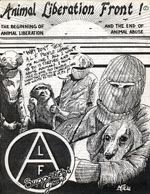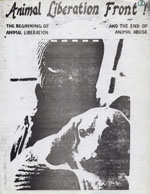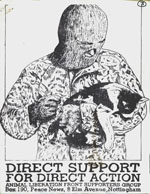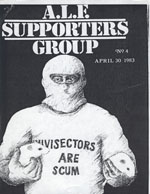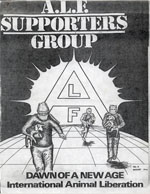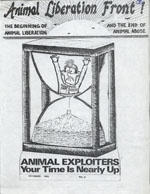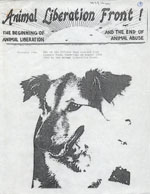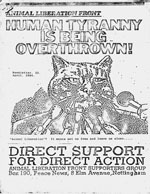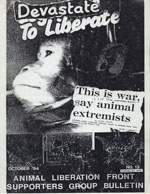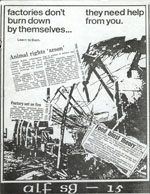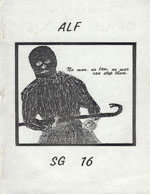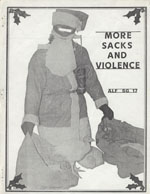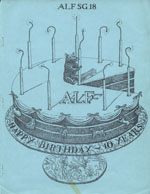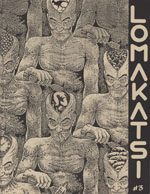» Next Entries
The Archives
-
Most Popular, Periodicals, The SG (original 80s volume)
The ALF Supporters Group Newsletter – The complete original set!
03.04.13 | PermalinkThe ALF Supporters Group Newsletter #1-19 (1982-1986. Nottingham / London, England)
When this archive project was founded two years ago, a list was made of the ten publications that we “had to have.” Number one was a complete set of the first volume of “The SG.” This was a tall order, and we knew it. First off, the Animal Liberation Front Supporters Group must be one of the most raided entities in England, and its members were frequently raided themselves! The result was that many copies of the magazine ended up in police custody both before and after distribution, never to be seen again. Second, it was a relatively old newsletter, and since the first issues were mimeographed on cheap paper, finding intact copies was going to be difficult. We persevered though, and now these rare pieces of movement history are preserved digitally and online for everyone to read and learn from.
Started by Dave Nicholls in 1982, the ALF Supporters Group was an effort to do two things: 1.) To raise funds for people arrested for animal related direct actions. 2.) To create a broader base of support for the Animal Liberation Front inside the movement. Both goals were met quickly. Within two weeks of their founding, the Supporters Group hit the number of members they had set as their long term goal. Through direct donations, memberships, fundraising events, and sales of merchandise, the SG was able to contribute towards the sizable legal costs of activists being arrested across England.
The newsletter itself went through varying degrees of quality in writing, layout, and value to the movement. The early days of the Nicholls run may have had a drab interior, but the hand illustrated covers were sometimes gorgeous, and the rhetoric had not yet strayed into the more-militant-than-thou nonsense which came later. Eventually the writing would border on the cultish, but there is scarcely an issue of the magazine that doesn’t have some redeeming value. When read critically and as a whole body of work, this magazine follows the rise and spread of underground action for animals across the globe, illustrates the value of coalition building, and provides solid examples of extremism to be avoided through coverage of groups like the Animal Rights Militia. It also provides many historical details found nowhere else!
“The SG” has gone through several incarnations since British Law enforcement shut this one down in 1986. (While carrying out the investigation for the notorious Sheffield trial that sent Ronnie Lee to prison for 10 years, the police raided the SG and charged it’s editors with incitement. Everything published by the SG afterwords had to be run past a lawyer first, but this didn’t stop further raids, arrests, and convictions of those involved in the newsletter.) It is still being published today, copies can be ordered from www.alfsg.org.uk.
Finally, an excellent analysis and critique of the SG and the rise of England’s “Cult of Militancy” can be found in the book Against All Odds, available here at the Talon Conspiracy.
…
-
One-off publications
Into The 90s With The ALF / This Is The ALF #2
12.26.12 | PermalinkInto The 90s With The ALF (1991, City Unknown, England)
This Is The ALF #2 (1994, City Unknown, New Zealand)First things first: the posting of these two old ALF publications requires a little uncomfortable honesty. You see, neither zine is particularly well written, the advice given on tactics (and strategy) isn’t particularly insightful, and everything covered inside has been dealt with better elsewhere. However, these were both widely distributed in their time, and as we aim to be a complete archive both of these anonymously distributed tracts deserve a place here on the site.
With that said (or written, as it happens to be!) these zines provide us with a view into the issues and campaigns being discussed by radical animal liberationists during the early 90s. The focus on economic damage versus rescue is particularly interesting, and some might argue resulted in a public relations failure for the movement. Also intriguing is tracking the way the contents traveled around the world to be republished in different countries. Into the 90s carries material originally published in Canada, This Is the ALF has content from the United States and England. The loose network of animal liberation militants that existed prior to the popular use of the internet is fascinating, and imagining how the anonymous authors of these publications received the items they ultimately reprinted is entertaining fodder for the imagination.
All told, these primers were meant to provide newcomers with a quick overview of the Animal Liberation Front, and to spread the use of direct action in their respective countries. They do so, just not in a particularly inspiring manner.
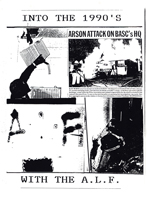

-
Periodicals
Lomakatsi
09.07.12 | PermalinkLomakatsi #1, 2, 3, and 4 (1987-1989, Washington, DC)
Many of the participants in the first boom of U.S. animal liberation activity were radicals, and not just when it came to their critique of non-human slavery. As I have mentioned in previous posts, speciesism is so intrinsic to most cultures that people embracing a pro-animal ethic almost always came from the fringes. These early pioneers pushed the message, took direct action, and put the plight of animals front and center in works of art, music, and literature. What became of these rebels when the movement became more mainstream, and thus more profitable to the careerists at national organizations? As a generation of gray, corporate pseudo-activists began to wield suits and ties instead of spanners and bolt cutters the old guard revolted in a variety of ways- one of which was an eclectic, anarchist journal known as Lomakatsi.
Taking the Hopi word for “Life in Balance,” a small collective of artists and activists set out to reject the dominant themes running through other, tamer publications. More than that, they started a project to live communally on a small parcel of land and experiment with more sustainable, less technological ways of living. By sharing their space with each other, and their thoughts with the world, the rebels continued to have an impact on the direction of the mvoement.
During it’s short life, Lomakatsi circulated about 1,000 copies per issue, introduced anti-civilization themes to AR folks through articles by John Zerzan, (And a letter from Feral Faun in one issue!) and stirred up plenty of controversy. Each issue contained DIY instructions for sabotage, oddball illustrations and comics, and advocacy for some ideas that were challenging to say the least. Their intentional community eventually stopped producing a journal, but those following animal liberation history will certainly see the influence that Lomakatsi had on our movement’s dialogue as we moved into the 1990s.
…
-
No Compromise, Periodicals
No Compromise #12-14
05.15.12 | PermalinkNo Compromise #12-14 (1999, Old Bridge, NJ and Santa Cruz, CA)
If I had to create a list of my favorite years in animal and earth liberation history, 1999 would be in the top 5. As the movement looked towards the new millennium there seemed to be an intense urgency in the air, perhaps people felt the need to close the 20th century with a bang or leave their mark before the world ended in a technological melt down on Y2K! Whatever the reasons, direct action reached a fever pitch. Lab raids returned to the United States, the Earth Liberation Front continued it’s ascendancy, Hillgrove farm was shut forever, and everyone seemed to be preparing for the World Trade Organization ministerial in Seattle. Across the globe there was a sense that people were not going to take it anymore, and whether you were struggling against bio-technology or prisons or speciesism, chances are good that you were employing some form of illegal tactic.
No Compromise may not have covered everything going on in the global struggle, but if it was animal lib related then chances are it was covered in these three issues. From the death of Alex Slack to end of the annual Hegins pigeon massacre, you’d be hard pressed to find a more complete overview of these twelve action packed months.
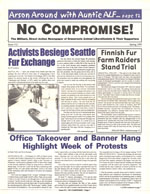
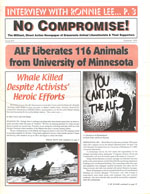
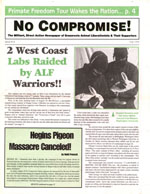
-
One-off publications
Elaho Valley Anarchist Horde on the end of the 7Cs: A Journal of Sasquatchology
04.23.12 | PermalinkElaho Valley Anarchist Horde on the end of the 7Cs: A Journal of Sasquatchology (2001, Victoria, Canada)
“The sun shines brightly in the yard, the sky is clear, the air fresh and bracing. Now the last gate will be thrown open, and I shall be out of site of the guard, beyond the bars, – alone! How I have hungered for this hour, how often in the past years have I dreamed of this rapturous moment – to be alone, out in the open, away from the insolent eyes of my keepers! I’ll rush away from these walls and kneel on the warm sod, and kiss the soil, and embrace the trees, and with a song of joy give thanks to Nature for the blessings of sunshine and air.” Alexander Berkman, Prison Memoirs of an Anarchist.
Upon my own release from prison I traveled to Seattle from Sheridan, Oregon to turn myself in to a halfway house. I too was an anarchist in the hands of the enemy, and while my incarceration was not as long or harsh as Berkman’s, his memoir contains long portions – sometimes entire pages – that feel so familiar it seems as though I wrote them myself. Several times in the final chapter he mentions a longing for wilderness, an urge to run from the dead cities of the northeast into the forests. On that ride from one lockup to another I knew why. Civilization is inherently confining, and even outside of the greybar hotel most of our lives consist of moving from one box to another in a continuous and agonizing march that we have little power to control. Looking out the windows of my friends car I wanted the passing sprawl to be sucked into the soil and replaced with life, beauty, and liberty.
The nature of incarceration can certainly make a person think about the incarceration of nature, but even those anarchists who have been lucky or smart enough to stay out of state custody often get it. If you are opposed to the artificial hierarchies of class, why support the equally arbitrary hierarchies based on species? If you think that forests have less worth than humans than I say you haven’t met enough cops! There isn’t one authority figure on earth I wouldn’t trade for a tree, and anyone who would argue the opposite is a moron. But forgive my rambling, I have written all the above because this wonderful DIY zine has sparked my sense of rebellion and wildness!
The end of the 90s and the early 2000s was a busy time for forest defenders, and across the globe direct action campaigns for wilderness were abundant and inspiring. There are many famous examples, and while Warner Creek and the anti-roads campaigns of England may have stolen the spotlight, one rugged crew in British Columbia carried on an overlooked battle that every activist should know about. If you like raging warrior grannies, sabotage, unlikely coalitions, and open revolt against corporations and their governmental subsidiaries, then you ought to read up on the history of actions in the Elaho, Squamish, and Simms valleys. This zine, written by members of the Elaho Valley Anarchist Horde as both a primer for new activists coming to the Elaho and a means of publicizing the campaign, is an excellent introduction.
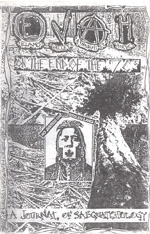
-
Periodicals
Things We Are Not Allowed To Show You, Part 1
01.08.12 | PermalinkThings We Are Not Allowed To Show You, Part 1 (Various Dates And Locations)
Since it’s very inception the United States has fought hard to take away, or manage into pointlessness, the rights “guaranteed” in the constitution and bill of rights. For proof one needs look no further than the first amendment: “Congress shall make no law respecting an establishment of religion, or prohibiting the free exercise thereof; or abridging the freedom of speech, or of the press; or the right of the people peaceably to assemble, and to petition the Government for a redress of grievances.” A thinking person could instantly rattle off any number of laws (and extra-legal government activity) that make nonsense of these words, particularly as they apply to free speech, the press, and the right of people to peaceably assemble!
Take for example 18 U.S.C. 842(p), the federal law concerning the distribution of texts involving explosives. Advocacy of armed action and violent revolution, even when intended to incite (but not likely to do so) is allegedly protected by the first amendment, but this law makes certain texts and websites illegal if the material therein is provided with knowledge or intent that the information will be used to commit a federal crime. Sounds reasonable right? Well, first one must consider the idea of intent, how it is proven, and how a person’s politics might be used to prejudice a jury against them. Second, one must consider that the Patriot Act provides considerable sentencing modifiers to any activity the government deems to be terrorism- even speech. The threat of twenty or more years behind bars could sway someone to self-censor (or plea to a lesser charge, even when they are innocent) when their “intent” could easily be misrepresented by a prosecutor.
Conflict Gypsy exists to archive rare and relevant publications of interest to militant animal and earth liberationists. Controversy is integral to the texts and images that we preserve and discuss, and in an ideal world we would be able to share all of the materials available to us. But, as it stands, we do have to worry about the dozens and dozens of state and federal laws that restrict free expression and sharing of ideas. Here is a small sampling of some of the covers of various publications that have at one time or another been distributed in radical non-human protection movements. We wish that we could share them in full and apologize to our readers that we do not live in a country where such liberty is afforded us.

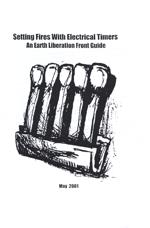
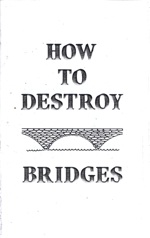
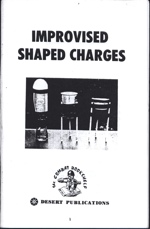
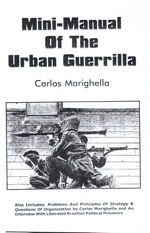
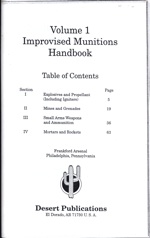
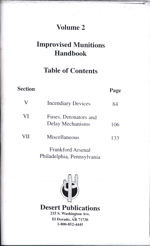
-
Books
War At Home: Covert Action Against U.S. Activists And What We Can Do About It
12.06.11 | PermalinkWar At Home: Covert Action Against U.S. Activists And What We Can Do About It (1989, Boston, MA.)
During the advent of illegal animal liberations in the United States the FBI had very little in the way of actionable intelligence on those responsible. That all changed when a mentally ill-former activist with a history of violence and stalking began speaking with the Bureau. His name was Bill Ferguson, and while he is best known as the activist who shot Last Chance for Animals founder Chris DeRose in the back, his legacy as the first North American super snitch is far more obscure. Once he began cooperating grand juries sprung up all over the country, homes were raided, and the dirty tricks experienced by other movements began entering the militant vegan arena. In response many grassroots animal organizations began to distribute Brian Glick’s excellent booklet, War At Home.
Clocking in at under 100 pages, War at Home covers all of the most important moments in the FBI’s Counter-Intelligence program, (Better known as COINTELPRO) including the events which occurred after COINTELPRO was supposedly shut down. In plain language and with surprising detail Glick discusses the means and aims of the FBI’s attempts at ending domestic dissent. More than a must read on past abuses, War At Home is also an invaluable handbook on security culture and support for those targeted by law enforcement harassment campaigns. The current wave of crackdowns on the Occupy movement make the free distribution of this booklet more important than ever- please share it with your friends.

…
-
No Compromise, Periodicals
No Compromise #9, 10, 11
11.15.11 | PermalinkNo Compromise #9, 10, 11 (1998, Caldwell, NJ.)
After the shakeup caused by Freeman Wicklund’s departure, one might have expected No Compromise to slow it’s publishing schedule while it re-grouped. Instead, they had one of their most productive years, reporting on everything from the first daylight raid in the US, to the murder of Earth First! activist David “Gypsy” Chain. The volume of important articles in these issues is too great to summarize in a tiny blog post, so instead we would just like to encourage you to read each edition thoroughly. Truly, this is one of our favorite posts on Conflict Gypsy so far as it highlights so many significant events in the movement at the end of the 1990s.
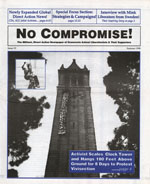
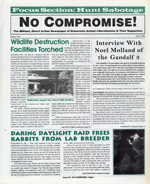

…
-
Books, Most Popular
The Black Cat Sabotage Handbook
10.31.11 | PermalinkThe Black Cat Sabotage Handbook, 3rd edition (1996, Eugene, OR.)
When I was a kid the world didn’t have the sort of instant gratification now expected for all transactions, and thank goodness. You can really appreciate the value of something more once you’ve clipped five proof of purchases, put them into an envelope, mailed them away, and waited 6 to 8 weeks for your Zartan action figure to arrive. Distribution for the Black Cat Sabotage book worked the same way – you clipped an ad out of a zine and mailed it in along with concealed cash. A few months later a copy showed up in a nondescript envelope. I still remember when mine was delivered…
My first copy of Black Cat left me feeling like I was involved in some sort of conspiracy just turning the pages. Sure, most of it was reprints that I had already seen before, but the layout, the graphics, and the text all seemed to carry the message that action was urgent and that the enemy was watching. (Of course, we were all sending envelopes with our return addresses to the same damn PO Box in Eugene, so if anyone was watching they already knew who we were!) At the time I didn’t know who was publishing or distributing it, but rumors eventually surfaced in the mid 2000’s that the book was compiled by Bill Rogers, an accused Earth Liberation Front member who took his own life behind bars in 2005. In his suicide note he said that his death was a “Jail break,” and as he slowly suffocated himself with a plastic bag he gripped one hand into a fist, and with the other, extended his middle finger.
I only met Bill one or two times and did not get to know him well, but since his death I have heard many complicated things about him. From what I gather he was at times heroic, but had some serious, perhaps unforgivable flaws that should not be ignored. In that respect he is like the book that he was rumored to have clipped together and sent out anonymously. The Black Cat Sabotage Handbook contains some good bits of information, some serious inspiration, and some decent arguments for the use of sabotage and even violence. Likewise, it also contains some foolhardy nonsense that could get someone jailed or killed for little positive gain. The cover shouts, “BEWARE!” and smart readers will heed that advice.
In closing, here is to Bill. He was a man I can best respect by keeping off a pedestal. I can not deny that many of the stories about him are disconcerting, but I also can not deny the beauty of his attempts to spark a revolution against industrialism. As his friends sat shivering and complaining in a car, it was Bill who trekked alone through snow, uphill and burdened with the weight of gallons of fuel to set a fire that would announce to millions the existence of the Earth Liberation Front. That speaks volumes about his fighting spirit, and his wild drive to right the wrongs our species has perpetrated. His death saddens me, but something tells me that someone so intent on freeing others would not have done well spending decades behind bars- perhaps in that sense his “jail break” really was a form of escape. He will be remembered as a warrior.
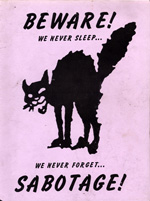
…
-
No Compromise, Periodicals
No Compromise #8 / Strategic Non-Violence for Animal Liberation
10.20.11 | PermalinkNo Compromise #8 / Strategic Non-Violence for Animal Liberation Insert (1997-1998, Minneapolis, MN)
On November 16th 1997, nine years prior to the day that I turned myself in to federal prison in the SHAC 7 case, I was arrested in Anaheim, California. Activists from around the country had descended upon the home of Disneyland to protest the American Association of Laboratory Animal Scientists and we soon found ourselves facing a small army of law enforcement officers. They had miniature tanks, riot suits, pepper spray, batons, counter sniper units on rooftops, and a willingness to use all of the above to maintain the right of vivisectors to keep cutting open living animals. The demonstrations that day set in motion a chain of events that would change the face of grassroots animal rights in America. What does any of this have to do with No Compromise #8 and it’s insert? Allow me to explain.
Freeman Wicklund was a vibrant, young activist from Minnesota. After animal rights militancy had been severely hampered in the late 80’s by grand juries, arrests, and the presence of informants, Freeman was one of the activists who had helped pick up the pieces. His organizing with Student Organization for Animal Rights had made Minneapolis a sort of mecca for direct action oriented vegans, and his projects in the early 90s included traveling to England to bring back literature, documentaries, and interviews about the strengths and weaknesses of the movement abroad. These materials proved to be very influential, and after a short period of contributing to publications such as Out of the Cages, Freeman started No Compromise magazine with a few friends. No Comp, as we called it back then, was the spark that lit a prairie fire. After its publication actions against animal abusers hit a fever pitch.
The 1990s were a complicated time. On the one hand a lot of dedicated, sincere people were taking tremendous risks and making large sacrifices to liberate animals from harm. On the other hand, thrill seekers and status hunters wanted to make a name for themselves while having a little adventure. The epicenter of the latter phenomenon was Salt Lake City. The straight edge scene in Utah was notoriously violent and cultish, and it adherents had attached veganism to their gang-like mentality. Direct actions were on the rise in the area, but many of them were being performed by people who could care less about the politics. When Freeman visited the state in 1997 to help train young people to deal with grand juries, he found a movement based on bragging and scene points. Animals were secondary to climbing the straight edge social ladder, and snitching and self incrimination were epidemic. Disgusted with what he saw there, Freeman began reading the works of pacifist Gene Sharp, and slowly he began to have personal doubts about the role of sabotage and aggressive protest.
Those private conflicts became very public in Anaheim. The AALAS protest drew hundreds of people from multiple states and ended in 8 arrests. While Wicklund was being arrested he began to shout that he was opposed to the ALF at a nearby camera which he mistakenly believed belonged to news media. (The camera was being operated by the police to gather evidence against the protestors.) While we were being detained in the Orange County Jail he told the other arrestees that he was a pacifist now, and upon his release he announced via e-mail lists that he would be quitting his job as editor at No Compromise. When issue #8 was released it contained an editorial announcing his departure, along with a 16 page insert that detailed the focal points of his new strategy.
The supposed “violence vs pacifism” debate is unlikely to ever be resolved, but the contentious battles between the two sides of that argument can sure tear apart a movement. Freeman, for his part, was not content to simply let his views be known. His actions now provide us with a clear road map of what not to do with tactical dogmatism; he began traveling the country denouncing direct action at conferences, he sent out press releases denouncing ALF actions, he even went so far as to visit and disrupt meetings of pro-direct action organizations, including Student Organization for Animal Rights, the group he once worked for.
Many people who had been inspired by Freeman now could not decide where they stood and slowly drifted away. Actions slowed to a standstill as infighting raged and many activists just decided to flee the internal drama. By the start of 1998 the number of grassroots groups were declining and regional networks were falling into disarray.
As time went on Freeman faded into obscurity. His activism became a hodgepodge of confusing moves like running for a school board position in Minnesota, giving equal time to the meat industry when he would table, and requiring that members of his group sign a pledge acknowledging that he was their leader. When his court date in the Anaheim case came around he skipped it to give a lecture about the failings of the Animal Liberation Front. I did show up for my court date, and was sentenced to 45 days in one of the most violent county jails in the United States. There, while on hunger strike, I rejected my own pacifist tendencies, and started down the path that would ultimately lead to my participation in the Stop Huntingdon Animal Cruelty campaign.

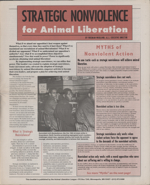
…
» Next Entries
